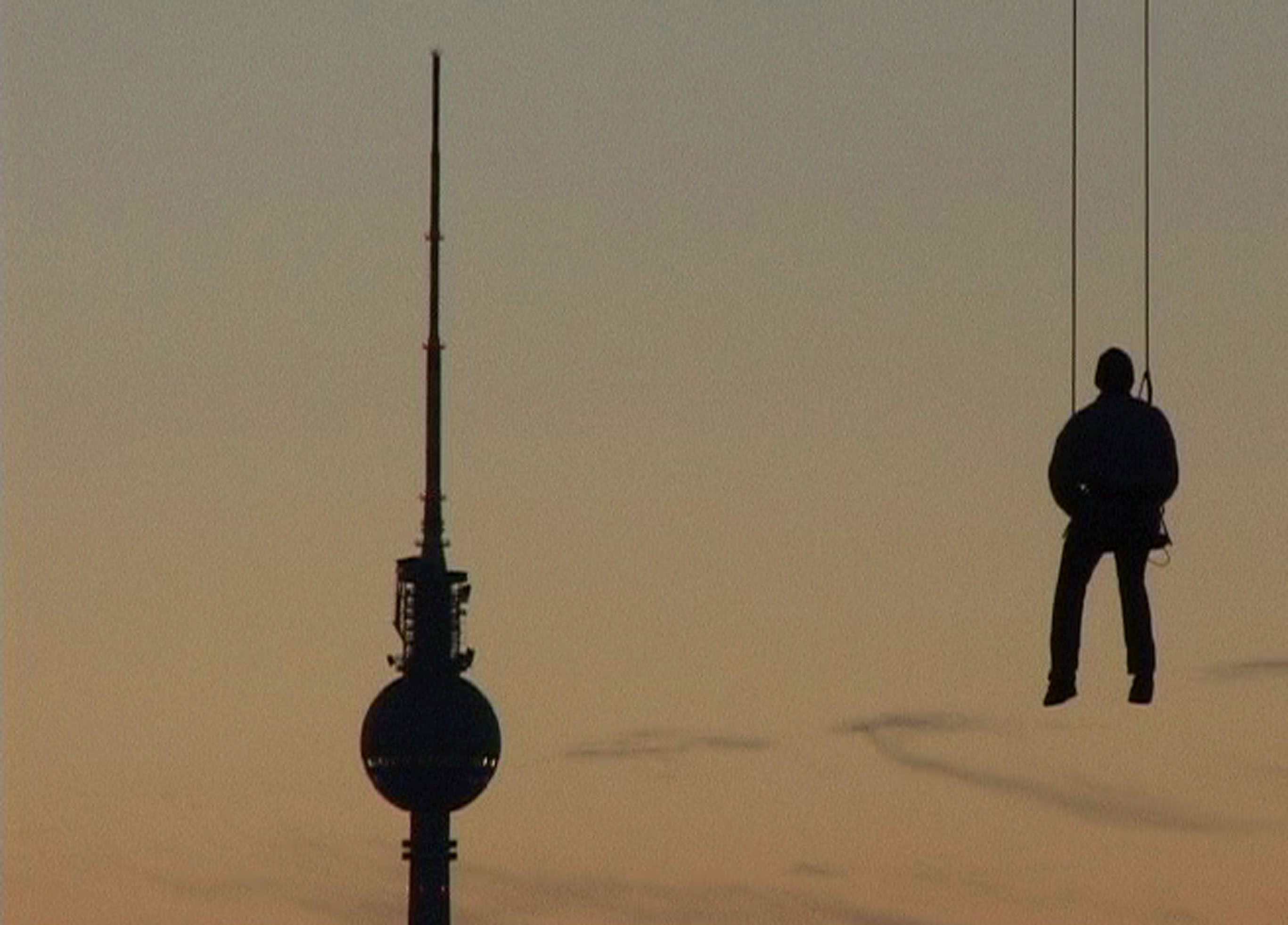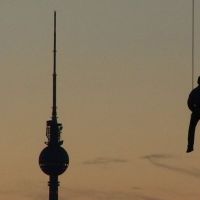Berlin is a place that artists want to be. It attracts them from all over the globe — Poland, Korea, Albania and Singapore, to name but a few of the countries represented in this exhibition. They go there to seek connections, collaborations, networks, education, mentoring — and cheap rent.
"Berlin 2000-2011: Playing among the Ruins," showing at the Museum of Contemporary Art, Tokyo provides a glimpse of the German capital's current scene.
MOT curators Yuko Hasegawa and Kazuhiko Yoshizaki, working with German curator Angela Rosenberg, have used this exhibition as a chance to celebrate Berlin as a city of total artistic freedom, as suggested by the Japanese subtitle for the show, "Watashitachi ni yurusareta tokubetsu na bashou no genzai" ("A new, special place where everything is permitted"). This does, naturally, overlook the fact that Germany is a country where, for good reason, any symbols associated with National Socialism (including pagan and Buddhist motifs that were appropriated by the Nazi party) are banned and any public display of Holocaust denial is outlawed. Berlin is a great place to make art — unless your art includes themes that are verboten.
Among that which is permitted is a vast array of contemporary art practices bringing together influences from all across the globe. "Berlin 2000-2011" is a rewarding experience featuring some of the city's most prominent and most interesting artists. The English subtitle to the show, "Playing among the ruins," suggests the symbolic and literal postwar ruins of 1940s Berlin as well as the destruction of the Berlin Wall in 1989. Even after more than two decades of reunification, former areas of East Berlin still have many vacuums in their urban spaces. These unique conditions, however, offer places of opportunity for artistic experimentation and play.
The video work of Matthias Wermke and Mischa Leinkauf, both born in East Berlin, seeks playful ways to portray Berlin from new perspectives. In "The Neonorange Cow," a swing was set up, in the dead of night, in the most unlikely places: subway tunnels, under bridges and in the large cavernous space of a major train station.
A sense of fun can also be seen in the costume play of Ming Wong as he re-enacts scenes from Pier Paolo Pasolini's classic cult film "Teorema." Ming takes the roles of all the film's family members as well as the mysterious seducer. As seen in his recent Tokyo solo show at Hara Museum of Contemporary Art, Ming uses cinema to deconstruct identity but never overlooks an opportunity for some delicious campiness as well.
The video selections are particularly strong. Phil Collins is an artist concerned with capturing diverse cultures and social groups on video. His "The Meaning of Style" takes a group of well-dressed Malaysian skinheads as its subject. Although Collins' work often crosses over into the territory of journalism, this particular work is an aesthetic and affectionate portrait of a fascinating youth subculture.
Omer Fast is represented by "The Casting." In this video, the art of documentary is deconstructed in poetic overlaps between two stories told by an American soldier. One side of the screen shows an actor's rendition of the story; the other, the spliced footage of the real interviewer and interviewee.
Anri Sala creates a powerful aural and visual sensation with his video "MIXED BEHAVIOUR". A DJ spins decks on a rooftop during New Year's Eve fireworks in Tirana, Albania. The video is projected in a room of complete darkness and accompanied by very loud audio. The sensation is much like being in a club; but it could also be an evocation of wartime trauma, with the large booms and colored smoke of the fireworks resembling bombs falling from the sky.
Lastly, another standout video/installation in the show is Simon Fujiwara's elaborate art piece in the form of a theater production. Working under the name "Fuji Re-United," the artwork reveals itself when the viewer goes "backstage." Along with various artifacts from the fictitious play, a video captures a conversation with Fujiwara and the actor he has hired to play his father as he explains the meaning of the play. This is a work by an artist who positions himself between two cultures — those of Japan and England — but he is shown in the context of an exhibition of German artists. Perhaps more than any of the other featured Berlin artists, Fujiwara is the perfect example of today's globally mobile contemporary artist.
"Berlin 2000-2011: Playing among the Ruins" at the Museum of Contemporary Art Tokyo runs till Jan 9; admission ¥1,100; open 10 a.m.-6 p.m., closed Mon. For more information, visit www.mot-art-museum.jp.




